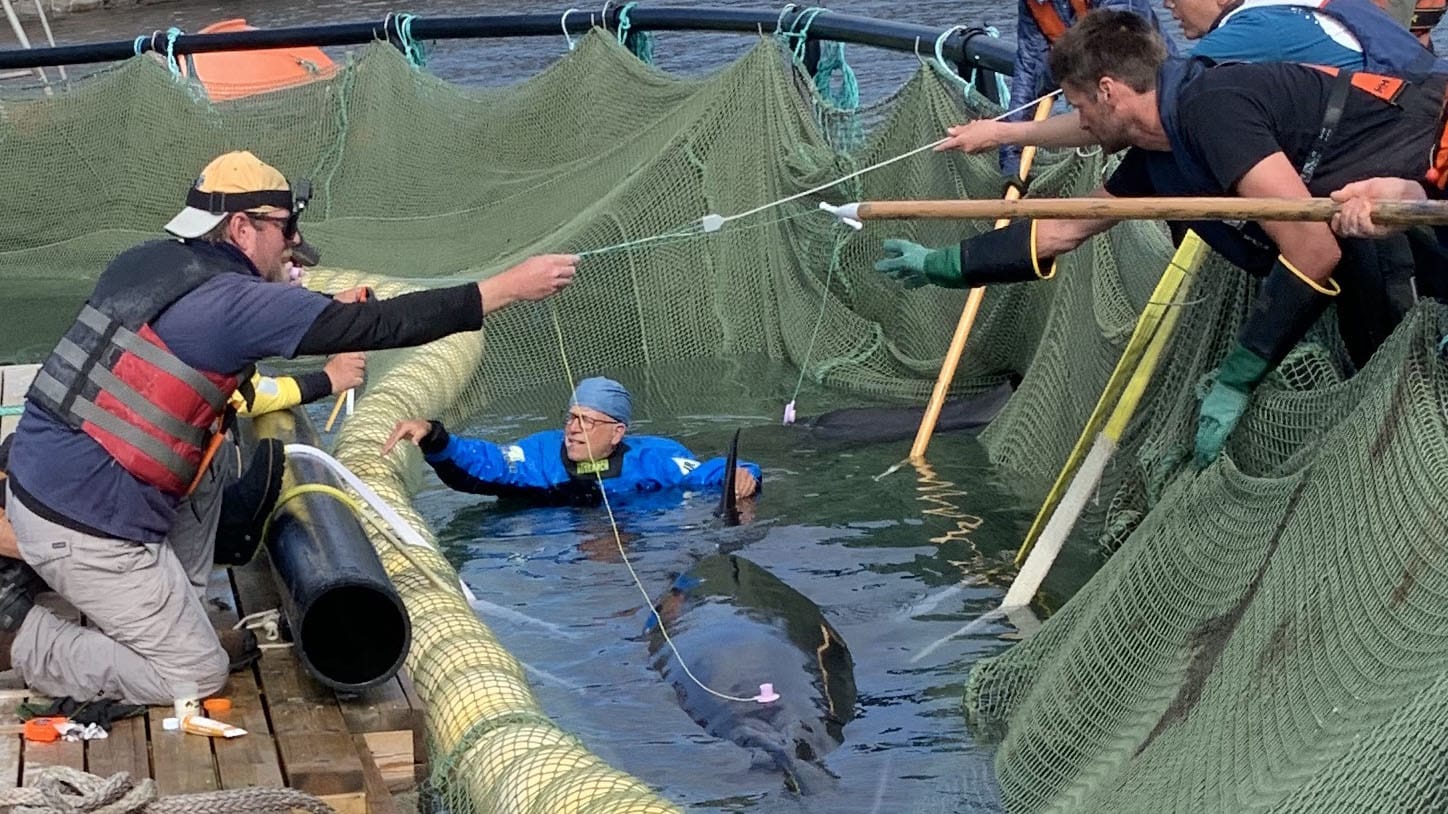A Whale of a (Hearing) Test

What frequencies can mysticete (baleen) whales hear? And how do you find out? A new study in Science shows that minke whales are capable of hearing higher frequencies than previously assumed. This finding has implications for understanding how human noise pollution can affect whale health and behavior.
Scientists know that odontocetes, or toothed dolphins and whales (think bottlenose dolphins and killer whales), can hear at high frequencies. But they hadn’t yet tested the hearing range of baleen whales – filter-feeders like the giant blue and humpback whales and their smaller cousin, the minke.
The long-held assumption about baleen whales was that they are low-frequency hearing specialists, so the new study is surprising in that respect. But the fact that scientists were able to conduct hearing assessments on a baleen whale in the first place is just as fascinating. How do you go about testing a whale’s hearing?
“Step one is to catch a whale, which isn’t a very easy step,” says Craig Harms, professor of aquatic, wildlife and zoo animal medicine at NC State and a co-author of the Science study. “We were fortunate to have some geographic features along the normal minke whale migration route that worked to help us set up what was essentially the world’s largest animal trap.”
Harms is an expert on whale health. He was tapped as one of two veterinary experts on the project and tasked with ensuring the whales were not being unduly stressed during the test.
The research team set up a little over a mile’s (1.7 kilometers) worth of net along the migration route – rocky islands in northern Norway that juvenile minke whales swim past to reach feeding grounds. The nets funneled the whale into a main catch basin, then from there into smaller enclosures, until the whale ended up in a net hammock with padded rollers.
Once the whale was safely immobilized – the researchers did not have to use sedatives – small suction cups with sensors were applied to the whale’s head, and the testing began.
“The test is called an AEP, or auditory evoked potential test,” Harms says. “It’s the same method used to test the hearing of infants or non-verbal humans. AEP calculates hearing sensitivity by measuring the electrical signals produced by the brain in response to sound. We had to modify the positioning a bit because whales are underwater, but the concept is the same.”
Although the initial approach was to keep humans out of the water around animals that weigh between 1,300 and 2,000 pounds (600 – 900 kilograms), the researchers found that a hands-on approach worked better. So Harms ended up in the water taking blood samples while monitoring the whale’s condition.
The team successfully captured and tested two juvenile minke whales in 2023. They found that minke whales can hear at frequencies as high as 45 to 90 kilohertz (khz). For comparison, a human’s top range is around 20 khz and killer whales can hear up to 125 khz. The researchers theorize that this high frequency hearing might help minkes detect echolocation clicks produced by their predator, the killer whale.
According to Harms, minkes are the perfect subject for conducting hearing tests.
“For baleen whales, minkes are on the small side,” Harms says. “Large draft horses weigh about as much as juvenile minkes. But their size not only makes it easier to detain them for testing, it’s also better for detecting auditory nerve signals. Bigger whales would just have too much tissue for the signals to travel through. We probably wouldn’t be able to test a humpback with this technique, even if we could safely restrain it.”


